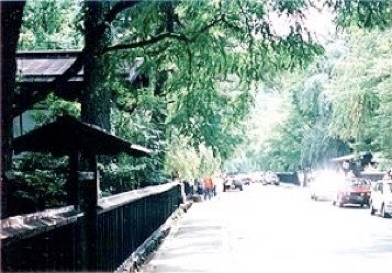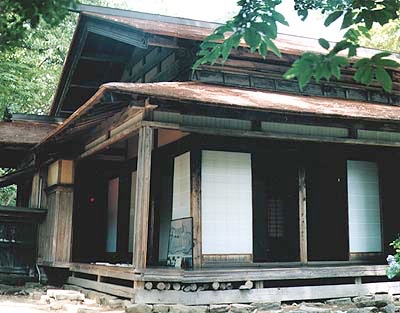









































One year I was deluged with work and still hadn't made any plans a scant two days before the obon holidays in mid-August. Lucky thing there are special overnight trains going practically everywhere during this season - despite the short notice, I managed to get a seat on a cheap kyuko express train that barreled all the way up the Japan Sea coast and deposited me, bleary-eyed, at Akita in the early morning. As a region, Akita is famous for both beautiful women (Akita-bijin) and Akita-ken dogs (not making you any point here, you understand). I wasn't awake enough to notice either, so I headed inland toward Lake Tazawa, my first stop. And on the way, I passed through Kakunodate, a small town noted for these wide, tree-lined streets with bukeyashiki or old samurai houses. Rarely do you find so many in the same place - and so carefully preserved.
One of the many houses in the area, all extremely well preserved. You can’t go inside, but everything is wide open and you can walk around it and see what it must have been like to live there. Signs here and there point out the history and discuss the architecture in extremely technical detail - in case you want to build one yourself, I guess.

